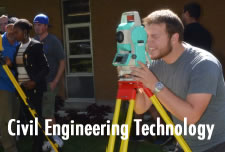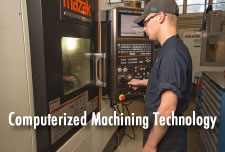Computer Aided Design Drafting Technology
Program Description
The design drafting profession affects everything done, every day, by every individual. Without a plan or visual graphic, nothing can be manufactured, built, made, or sold. Everything has a plan for creation and design drafters are the people who make it happen.
The Computer Aided Design Drafting Technology graduate is prepared to work in engineering, architectural, building, and manufacturing professions. Graduates are trained on the latest versions of Computer Aided Drafting (CAD) and modeling software used in many disciplines including mechanical, structural, architectural, and interior design.
Graduates Employed or Continuing Education Five-Year Average
92%
Average Idaho Income
$28,900 - $45,610
Program Overview

- Program accepts students in August
- Typical classroom hours are Monday through Friday from 8:00 a.m. to 10:30 a.m. and open lab time from 10:30 a.m. to 3:00 p.m.
- Program admits up to 30 students each year
- Books can be checked out from the program at no cost to students
- Accredited by the Association of Technology, Management, and Applied Engineering (ATMAE)
- Program located in the Eames Complex, Building #96, 1999 Alvin Ricken Drive
Degree Options
Computer Aided Design Drafting Associate of Applied (2 years)
- Course Sequence Associate of Applied Science Computer Aided Design Drafting - Architectural
- Course Sequence Associate of Applied Science Computer Aided Design Drafting - Mechanical
- Costs
Computer Aided Design Drafting Advanced Technical Certificate (2 years)
- Course Sequence Advanced Technical Certificate Computer Aided Design Drafting - Architectural
- Course Sequence Advanced Technical Certificate Computer Aided Design Drafting - Mechanical
- Costs
Mechanical Drafting Intermediate Technical Certificate (1 year)
- Course Sequence Intermediate Technical Certificate Computer Aided Design Drafting - Mechanical
- Costs
Architectural Drafting Intermediate Technical Certificate (1year)
Bachelor of Applied Science (4+ years)
Program Requirements
The drafter/designer must be able to learn how to visualize forms and shapes from blueprints and sketches, develop an understanding of and then apply theoretical principles and technical knowledge, think critically, and be self-directed. Drafters/designers should enjoy technical work; work that involves precision by following industry standards. The successful drafter/designer should be able to prioritize, work rapidly, meet deadlines, and produce quality work.
Career Opportunities
- Engineering and architectural firms
- Machinery manufacturers
- Structural metal fabricators
- Construction companies
| SAT | Math: 500 |
| ACT | Math: 19 |
| ALEKS | Math: 30 |
Q and A with Instructor Alesha Churba
Alesha Churba began her career in drafting after experiencing a lot of life. She had received her bachelor’s, got married, had a child and left that marriage. Her daughter acted as an inspiration which pushed her into looking for a better life. That improvement was found in Design Drafting. This led to architectural design, kitchen and bathroom design, and eventually, education. While she teaches CADD now it’s thanks to a variant of the program, called Revit, that she has the career she does. Over the years of educating Churba fell in love with helping students discover what they were capable of within the software. Much like a gardener does with their plants. When asked a few things about her program this is what she said.
Q: What is your favorite part of running/teaching this program?
A: I love helping the students discover what they can learn to do and watching them become successful in the program and their careers.
Q: What is the coolest thing students can look forward to in your program?
A: “There are several things the students can look forward to in the program from modeling an entire building in 3D and then walking through it in Virtual Reality to learning how to model mechanical parts in 3D and then designing a derby car that they get to print on a 3D printer and then race.”
Q: If you had one tip or trick for students interested in this program what would it be?
A: “ We are here to help you succeed so don't be afraid you can't do this program, because you can.”
Q: Why should students consider this program?
A: “We have very successful students in so many different careers because drafting is used in every industry in some way. Another great thing is you don't have any textbook costs in the CADD program because we provide them for you as well as access to all of the drafting programs we use so you can use them at home.”






